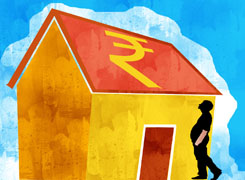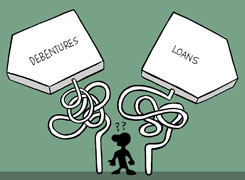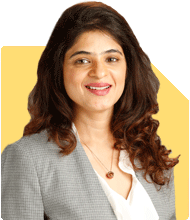Should I close my home loan to invest in other assets?
Ramalingam Kalirajan |8459 Answers |Ask -Follow
Mutual Funds, Financial Planning Expert - Answered on Jul 15, 2024
He has an MBA in finance from the University of Madras and is a certified financial planner.
He is the director and chief financial planner at Holistic Investment, a Chennai-based firm that offers financial planning and wealth management advice.... more

नमस्ते सर, मेरे पास 19 लाख रुपये का होम लोन बचा हुआ है, हालांकि मैं अपनी बचत से होम लोन चुका सकता हूं, लेकिन मैंने टैक्स बचाने और कम ब्याज दर के लिए इसे रखा है। मैं पूरा घर बेचने और उसी प्रॉपर्टी पर नया लोन लेने के बारे में सोच रहा हूं ताकि इस रकम को दूसरी संपत्तियों में निवेश कर सकूं। कृपया सलाह दें कि क्या यह सही फैसला होगा।
हालांकि, अगर बाजार की स्थिति बदलती है और निवेश रिटर्न आपके लोन की ब्याज दर से कम हो जाता है, तो लोन को बनाए रखना समझदारी नहीं होगी। अवसर लागत का मूल्यांकन करना महत्वपूर्ण है।
लोन चुकाना
बचत से अपने होम लोन का भुगतान करने से मन को शांति मिलती है और कर्ज मुक्त स्थिति मिलती है। इससे मासिक खर्च कम होता है, जिससे अन्य उद्देश्यों के लिए नकदी बचती है। इसके अलावा, आप लोन अवधि के दौरान ब्याज भुगतान पर बचत करते हैं।
हालांकि, लोन चुकाने का मतलब है ऐसे फंड का उपयोग करना जो संभावित रूप से कहीं और अधिक रिटर्न कमा सकते हैं। आपको यह आकलन करने की आवश्यकता है कि क्या ब्याज पर बचत की निश्चितता निवेश से संभावित उच्च रिटर्न से अधिक है।
नया लोन लेना
अन्य संपत्तियों में निवेश करने के लिए उसी संपत्ति पर नया लोन लेना लीवरेजिंग का एक रूप है। लीवरेजिंग रिटर्न को बढ़ा सकता है लेकिन जोखिम भी बढ़ाता है। अगर आपके निवेश अच्छा प्रदर्शन करते हैं, तो यह रणनीति कारगर साबित होती है। हालांकि, अगर वे कम प्रदर्शन करते हैं, तो आपको बिना किसी रिटर्न के उच्च ऋण का सामना करना पड़ता है।
निवेश विकल्पों का आकलन
लीवरेजिंग पर विचार करते समय, संभावित निवेशों का मूल्यांकन करना महत्वपूर्ण है। म्यूचुअल फंड, इक्विटी या अन्य परिसंपत्तियों में विविधता लाने से होम लोन ब्याज दर की तुलना में अधिक रिटर्न मिल सकता है। हालांकि, प्रत्येक के अपने जोखिम और रिटर्न प्रोफाइल होते हैं।
म्यूचुअल फंड: ये पेशेवर प्रबंधन और विविधीकरण प्रदान करते हैं। विशेषज्ञ फंड मैनेजरों की देखरेख में सक्रिय रूप से प्रबंधित फंड, बाजार से बेहतर प्रदर्शन करने का लक्ष्य रखते हैं। यह इंडेक्स फंड की तुलना में बेहतर रिटर्न दे सकता है, जो केवल बाजार सूचकांकों की नकल करते हैं।
इक्विटी: प्रत्यक्ष स्टॉक निवेश उच्च रिटर्न दे सकते हैं लेकिन उच्च जोखिम के साथ आते हैं। बाजार की अस्थिरता रिटर्न को प्रभावित कर सकती है, और इसे प्रभावी ढंग से प्रबंधित करने के लिए पर्याप्त ज्ञान और समय की आवश्यकता होती है।
ऋण साधन: इक्विटी की तुलना में सुरक्षित, ये निश्चित रिटर्न देते हैं लेकिन संभावित इक्विटी रिटर्न से कम हो सकते हैं। ऋण और इक्विटी के बीच संतुलन स्थिरता और विकास प्रदान कर सकता है।
इंडेक्स फंड के नुकसान
इंडेक्स फंड, लोकप्रिय होते हुए भी, कुछ कमियाँ रखते हैं। वे निष्क्रिय रूप से बाजार सूचकांकों को ट्रैक करते हैं और सक्रिय प्रबंधन की कमी रखते हैं। इसका मतलब है कि वे बाजार से बेहतर प्रदर्शन नहीं कर सकते हैं, और आप उच्च रिटर्न की संभावना से चूक जाते हैं। इसके अतिरिक्त, बाजार में गिरावट के दौरान, इंडेक्स फंड बाजार की तरह ही गिरते हैं।
दूसरी ओर, सक्रिय रूप से प्रबंधित फंड में फंड मैनेजर रणनीतिक निर्णय लेते हैं। यह संभावित रूप से बेहतर रिटर्न दे सकता है, खासकर अस्थिर बाजारों में। फंड मैनेजर की विशेषज्ञता बाजार में उतार-चढ़ाव को नेविगेट करने और अवसरों को भुनाने में मदद करती है।
डायरेक्ट फंड के नुकसान
डायरेक्ट फंड सीधे म्यूचुअल फंड कंपनियों से खरीदे जाते हैं, बिचौलियों को दरकिनार करते हुए। जबकि उनके पास कम व्यय अनुपात होता है, उन्हें पर्याप्त निवेश ज्ञान और समय की आवश्यकता होती है। निवेशकों को नियमित रूप से पोर्टफोलियो की निगरानी और पुनर्संतुलन की आवश्यकता होती है, जो चुनौतीपूर्ण हो सकता है।
प्रमाणित वित्तीय योजनाकारों (सीएफपी) के माध्यम से खरीदे गए नियमित फंड पेशेवर सलाह और प्रबंधन प्रदान करते हैं। सीएफपी उपयुक्त फंड चुनने, नियमित निगरानी और पुनर्संतुलन में मदद करते हैं। सीएफपी का मार्गदर्शन निवेश रिटर्न को बढ़ा सकता है और उन्हें आपके वित्तीय लक्ष्यों के साथ संरेखित कर सकता है।
जोखिम प्रबंधन और विविधीकरण
लीवरेजिंग से बाजार के जोखिमों के प्रति जोखिम बढ़ता है। परिसंपत्ति वर्गों में निवेश में विविधता लाने से जोखिम कम होता है। इक्विटी, डेट और म्यूचुअल फंड का संतुलित पोर्टफोलियो स्थिरता और विकास प्रदान कर सकता है।
इक्विटी: उच्च रिटर्न लेकिन उच्च जोखिम प्रदान करता है। दीर्घकालिक लक्ष्यों के लिए उपयुक्त।
डेट: कम रिटर्न के साथ स्थिरता प्रदान करता है। अल्पावधि से मध्यम अवधि के लक्ष्यों के लिए अच्छा है।
म्यूचुअल फंड: विविधीकरण और पेशेवर प्रबंधन प्रदान करते हैं। जोखिम और रिटर्न को संतुलित करें।
अपने वित्तीय लक्ष्यों का मूल्यांकन करना
अपने वित्तीय लक्ष्यों का आकलन करने से सूचित निर्णय लेने में मदद मिलती है। यदि आपका लक्ष्य दीर्घकालिक धन सृजन है, तो इक्विटी और म्यूचुअल फंड में निवेश करना फायदेमंद हो सकता है। अल्पकालिक लक्ष्यों के लिए, डेट इंस्ट्रूमेंट स्थिरता प्रदान करते हैं।
नकदी प्रवाह और तरलता
पर्याप्त तरलता बनाए रखना महत्वपूर्ण है। लीवरेज करने से पहले सुनिश्चित करें कि आपके पास पर्याप्त आपातकालीन निधि है। एक सुनियोजित नकदी प्रवाह सुनिश्चित करता है कि आप ऋण चुकौती को पूरा कर सकते हैं और अप्रत्याशित खर्चों का प्रबंधन कर सकते हैं।
पेशेवर सलाह और निगरानी
एक प्रमाणित वित्तीय योजनाकार (सीएफपी) के साथ नियमित परामर्श सुनिश्चित करता है कि आपके निवेश आपके लक्ष्यों के अनुरूप हों। सीएफपी विशेषज्ञ सलाह प्रदान करते हैं, उपयुक्त निवेश विकल्पों का चयन करने और नियमित पोर्टफोलियो निगरानी में मदद करते हैं। उनका मार्गदर्शन रिटर्न बढ़ा सकता है और जोखिमों को प्रभावी ढंग से प्रबंधित कर सकता है।
आपका निर्णय
उपर्युक्त कारकों पर विचार करते हुए, आपका निर्णय आपकी जोखिम सहनशीलता, वित्तीय लक्ष्यों और नकदी प्रवाह आवश्यकताओं के अनुरूप होना चाहिए। ऋण चुकाने से मन को शांति मिलती है और कर्ज कम होता है। हालाँकि, यदि आपके पास उच्च जोखिम सहनशीलता और अच्छी तरह से विविध निवेश रणनीति है, तो लीवरेजिंग संभावित रूप से रिटर्न बढ़ा सकता है।
सादर,
के. रामलिंगम, एमबीए, सीएफपी,
मुख्य वित्तीय योजनाकार,
www.holisticinvestment.in
आप नीचे ऐसेही प्रश्न और उत्तर देखना पसंद कर सकते हैं
Milind Vadjikar |1236 Answers |Ask -Follow
Insurance, Stocks, MF, PF Expert - Answered on Sep 09, 2024
Ramalingam Kalirajan |8459 Answers |Ask -Follow
Mutual Funds, Financial Planning Expert - Answered on Aug 31, 2024
Ramalingam Kalirajan |8459 Answers |Ask -Follow
Mutual Funds, Financial Planning Expert - Answered on Nov 18, 2024
Ramalingam Kalirajan |8459 Answers |Ask -Follow
Mutual Funds, Financial Planning Expert - Answered on May 15, 2025
Dr Nagarajan J S K |406 Answers |Ask -Follow
NEET, Medical, Pharmacy Careers - Answered on May 16, 2025

Based on my understanding, no one usually requests a birth certificate at this age. Your inquiry relates to the period before and after independence. In those days, they would accept the SSLC book if you didn't have a birth certificate. However, I am not sure if that was the case during your time.
Instead, you can present your Aadhaar card, which likely includes your original date of birth. You can utilize that information.
If my response doesn't fully address your concerns, I recommend consulting a Notary Public for further assistance.
BEST WISHES.
THANK YOU SIR.
with regards
Prof Suvasish Mukhopadhyay |651 Answers |Ask -Follow
Career Counsellor - Answered on May 16, 2025
Prof Suvasish Mukhopadhyay |651 Answers |Ask -Follow
Career Counsellor - Answered on May 16, 2025
Radheshyam Zanwar |1634 Answers |Ask -Follow
MHT-CET, IIT-JEE, NEET-UG Expert - Answered on May 16, 2025
Radheshyam Zanwar |1634 Answers |Ask -Follow
MHT-CET, IIT-JEE, NEET-UG Expert - Answered on May 16, 2025
Ashwini Dasgupta |107 Answers |Ask -Follow
Personality Development Expert, Career Coach - Answered on May 16, 2025
Ramalingam Kalirajan |8459 Answers |Ask -Follow
Mutual Funds, Financial Planning Expert - Answered on May 16, 2025
Ramalingam Kalirajan |8459 Answers |Ask -Follow
Mutual Funds, Financial Planning Expert - Answered on May 16, 2025
Milind Vadjikar |1236 Answers |Ask -Follow
Insurance, Stocks, MF, PF Expert - Answered on May 16, 2025
Milind Vadjikar |1236 Answers |Ask -Follow
Insurance, Stocks, MF, PF Expert - Answered on May 16, 2025

























